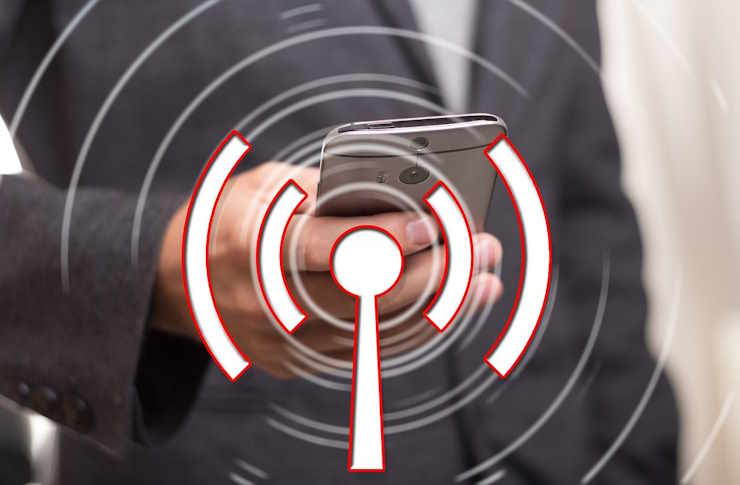A Guide to 5G Phone Plans: Features, Pricing, and Availability
As 5G networks continue to expand, phone plans that use this technology could offer faster browsing, smoother streaming, and improved reliability. Prices may differ depending on the provider, the data package, and included features. This article explores the potential advantages of 5G phone plans, how costs are structured, and what options might be offered in your area.

Fifth-generation wireless technology represents a significant leap forward in mobile communications. Unlike previous generations, 5G delivers download speeds that can exceed 1 Gbps in optimal conditions, dramatically reducing buffering times for streaming content and enabling seamless video calls. The technology also supports a greater number of connected devices simultaneously, making it ideal for households with multiple users and smart home ecosystems.
When evaluating 5G phone plans, understanding the core advantages of this technology helps clarify whether upgrading makes sense for your situation. Beyond raw speed, 5G networks offer improved reliability in crowded areas like stadiums or urban centers, where previous generations often struggled with congestion.
What Are the Benefits of 5G Technology?
The primary benefits of 5G extend beyond faster download speeds. Latency, or the delay between sending and receiving data, drops significantly with 5G networks, often to under 20 milliseconds compared to 50-100 milliseconds with 4G LTE. This improvement enhances real-time applications like gaming, video conferencing, and augmented reality experiences.
Network capacity also increases substantially with 5G infrastructure. Carriers can support more simultaneous connections without degrading service quality, which proves particularly valuable in densely populated areas. Additionally, 5G technology enables more consistent performance when moving at high speeds, such as during train or car travel.
Energy efficiency represents another advantage, as 5G devices and infrastructure consume less power per data unit transmitted. This translates to potentially longer battery life for smartphones and reduced environmental impact over time.
Understanding Prices and Plan Structures
Carriers structure their 5G phone plans across multiple tiers, typically ranging from basic unlimited plans to premium offerings with additional perks. Entry-level 5G plans generally start around $50-$70 per month for a single line, with prices decreasing per line when adding multiple users to a family plan.
Mid-tier plans, priced between $70-$85 per month, often include enhanced data prioritization, meaning your connection receives preferential treatment during network congestion. These plans may also bundle streaming service subscriptions or mobile hotspot data allowances.
Premium 5G plans, costing $85-$100 or more monthly, typically offer unlimited premium data without deprioritization, international features, and maximum hotspot allowances. Some carriers also include device upgrade programs or cloud storage as part of these higher-tier offerings.
| Plan Tier | Carrier Example | Monthly Cost Estimation | Key Features |
|---|---|---|---|
| Basic Unlimited | T-Mobile Essentials, AT&T Unlimited Starter | $50-$65 | 5G access, unlimited talk/text/data with potential deprioritization |
| Mid-Tier | Verizon 5G Play More, T-Mobile Magenta | $70-$85 | Premium data allowance, streaming perks, enhanced hotspot |
| Premium | AT&T Unlimited Elite, Verizon 5G Get More | $85-$100+ | Unlimited premium data, international features, maximum hotspot |
| Prepaid 5G | Visible, Cricket Wireless, Metro by T-Mobile | $40-$60 | 5G access, flexible terms, varying data caps or deprioritization |
Prices, rates, or cost estimates mentioned in this article are based on the latest available information but may change over time. Independent research is advised before making financial decisions.
Many carriers also offer promotional pricing for new customers or discounts when bundling with home internet services. Autopay enrollment and paperless billing typically reduce monthly costs by $5-$10 per line.
Is 5G Available in My Area?
Coverage availability varies significantly by carrier and geographic location. Major metropolitan areas generally have robust 5G networks across multiple carriers, while rural and suburban regions experience more limited deployment. Carriers distinguish between different types of 5G technology, which affects both speed and coverage.
Low-band 5G offers the widest coverage area, with signals that travel farther and penetrate buildings more effectively. However, speeds with low-band 5G often resemble enhanced 4G LTE rather than the dramatic improvements associated with 5G marketing.
Mid-band 5G strikes a balance between coverage and performance, delivering noticeably faster speeds than 4G while maintaining reasonable coverage areas. This spectrum has become the primary focus for many carriers’ 5G buildouts.
High-band 5G, sometimes called millimeter wave or mmWave, provides the fastest possible speeds but covers very limited areas, often just a few city blocks. This technology works best in dense urban environments and specific venues like airports or stadiums.
To determine availability in your area, visit carrier coverage maps online, which typically allow you to enter your address and view expected 5G service levels. Keep in mind that coverage maps represent estimates, and actual performance depends on factors like building materials, terrain, and network congestion.
Choosing the Right 5G Plan
Selecting an appropriate 5G phone plan requires evaluating your typical data usage, budget constraints, and coverage needs. If you primarily use your phone in areas with strong 5G coverage and frequently stream video or download large files, investing in a mid-tier or premium plan makes sense.
For users who spend most time on Wi-Fi or have modest data needs, basic unlimited plans provide 5G access without premium pricing. Families should compare multi-line discounts across carriers, as these can significantly reduce per-line costs.
Consider whether you need international features, premium streaming quality, or substantial mobile hotspot allowances. These extras add value only if you regularly use them, so avoid paying for unused features.
Prepaid 5G plans offer flexibility without long-term contracts, though they may include more restrictive data management policies. These work well for users who want to test 5G service before committing to postpaid plans.
Making the Transition to 5G
Upgrading to 5G requires a compatible device, as older smartphones lack the necessary hardware to access 5G networks. Most smartphones released since 2020 include 5G capability, though specific band support varies by model.
When switching carriers or plans, verify that your current device supports the specific 5G bands used by your chosen carrier. Some phones work optimally with certain carriers due to band compatibility differences.
Existing customers can often upgrade their plans to include 5G access without changing phone numbers or account structures. Contact your carrier to explore available options and any promotional offers for current subscribers.
As 5G networks continue expanding and technology matures, coverage gaps will diminish and pricing structures may evolve. Staying informed about developments in your area helps ensure you receive optimal value from your mobile service investment.




